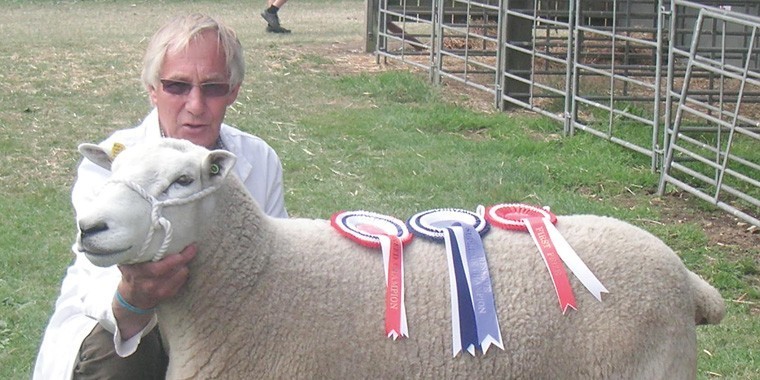It is surprising how events go round in circles. I noticed on Twitter a week or so ago that someone had posted a picture of – and expressed surprise at – a diagram of a paddock grazing system taken from a book written in the sixties.
This is just where some more forward looking producers are going now to improve the efficiency of grassland use. I do, from time to time, like to look back at some of my past South East Farmer copy. In November 2005 my opening paragraph was:
i>“This autumn’s sales of breeding sheep have been far from normal; female prices have, in general, been very good, although some of the higher input hybrid ewes seem to have seen a significant reduction in demand in some areas, in favour of a more versatile, easier keep type of sheep… Poor lamb prices do not seem to have dented producer confidence either; undoubtedly the long-term future for sheep, although not exceptional, is probably significantly better than the other grass based livestock sectors… The ram trade has however not been quite so buoyant, with most of the sales reporting a significant drop in average prices; in general buyers seem to have been very focused on the type of ram that they have wanted and have been prepared to pay good money for those rams but not for other types – reenforcing the old adage that if ewe prices are high, ram prices are poor. The general level of confidence is a reflection on the pragmatism that exists within the sheep sector as producers adapt to the changing production environment, there is an acceptance by producers that survival of the industry will be derived from within our own resources…”
This could almost have been written about this season: the gaps were bits that related to the loss of the ewe premium (that does seem like a long time ago). The prices for breeding ewes has been relatively good this year in spite of the lamb trade. Whatever happened to the old addage that a ewe teg, for breeding, was worth one and a half lambs? That would put them at about £90.
The ram trade has not been too bad, but could always be better. Once again breeders do seem focused on the better types of ram and are willing to pay a sensible price for the right sorts of rams. That said there have been some very good, well bred rams (particularly some of the down breeds) that have not made the money that they deserve. The poorer types of rams have in general not attracted much interest, which is just as it should be. I do suspect however that come the end of October or early November, there will still be buyers in the market looking to pick up cheap “last minute” rams. There are cheap rams and there are good rams but, with the odd exception, there is no such thing as a cheap, good ram.
A good ram takes good breeding, from good stock, plus a lot of care, commitment and attention to detail on the part of breeders to produce, and breeders do deserve to be properly rewarded for their efforts. But there are still breeders out there that think that ram breeding is easy and that anything with a pair of testicles can be offered for sale as a breeding ram. I have even seen “pedigree” ram tegs advertised for sale at £150; rams that, I suspect, may be pure bred, but probably not registered with any breed society (so arguably not really pedigree), and not subject to any quality controls or checks. That sort of thing really does a huge disservice to the sheep industry.
On the subject of things repeating themselves, Bluetongue BTV-8 has reapeared in Allier, central France. It was first reported in the middle of September, and by the end of the month the outbreak had spread to 17 farms in the region, with 42 cases in cattle and three cases in sheep confirmed by the French authorities. In response to the outbreak the French authorities have ordered 1.3 million doses of BTV-8 vaccine and have introduced a 93 mile active surveillance and control zone around
the outbreak.
Although not posing an immediate threat to UK producers, DEFRA are monitoring the situation closely and employing meteorological modelling to assess the current and potential risks in the UK. The sheep (and cattle) sector could certainly do without the additional complications that would arise from an outbreak in the UK, and I suspect that UK responsiveness, particularly with regard to sourcing and initiating a vaccination programme, would not be as rapid as the French.




